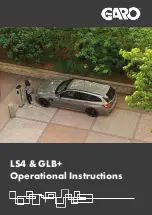
3.
If present, check the condition of the insulation
material around the exhaust pipe between the
turbocharger and the ATD.
4.
Check the ATD mounting bands for tightness.
Tighten to 30 lbf·ft (41 N·m) if needed. Do not
overtighten.
5.
Check for leaks around the clamps that attach
the ATD in the ATS, and around the clamps that
retain the DPF in the ATD.
6.
Check all sensors attached to the ATS for leaks
or damaged wires. No leaks are allowed. See
, or
for Detroit Diesel ATS
sensor locations.
7.
Check the DPF exterior surface for dents or
other damage. A dent over 3 inches (76 mm) in
diameter and 1/4-inch (6-mm) deep could cause
internal damage to the DPF, causing it to mal-
function.
8.
Check the SCR catalyst for dents and other
damage.
9.
Check for heat discoloration on the surface of
the ATD. Heat discoloration may indicate internal
damage; especially around the DPF.
NOTE: Diesel exhaust fluid creeps, causing
white crystals to form around the line fittings.
The presence of crystals does not mean the
system has a leak. Replacing fittings or trouble-
shooting components is not necessary unless
there is a system failure or a fault code.
10. Check the DEF tank, pump, metering unit, and
lines for leaks. See
Section 49.01
of the
122SD
and Coronado Workshop Manual
for repair pro-
cedures.
11. Check any wires, lines, or hoses within 4 inches
(10 cm) of the exhaust system for heat damage.
Repair or reroute as needed.
Diesel Exhaust Fluid (DEF) Filter
Replacement
The Environmental Protection Agency’s 2010 regula-
tions require lower nitrogen oxide (NOx) exhaust
emissions. Selective catalytic reduction (SCR) uses
diesel exhaust fluid (DEF) to lower NOx emissions in
the vehicle exhaust. A filter in the DEF pump pre-
vents clogging of the DEF metering unit injection
nozzle.
See the engine manufacturer’s maintenance manual
for filter replacement instructions and maintenance
intervals.
ADR2011 Exhaust System
Inspection
IMPORTANT: The Australian Department of In-
frastructure and Transportation regulations for
2011 (ADR2011) require lower exhaust emis-
sions, thus requiring new exhaust system com-
ponents. See
. In particular the aftertreat-
ment device (ATD), which is part of the
aftertreatment system (ATS), requires special
attention during regularly scheduled mainte-
nance inspections. If any discrepancies are dis-
covered, refer to the engine manufacturer’s ser-
vice literature for repair instructions.
Inspection
1.
Check for leakage at the clamp that attaches the
exhaust pipe to the turbocharger exhaust outlet.
If leakage exists, tighten the nut on the clamp to
the required torque. If leakage persists, install a
new clamp.
2.
Check the exhaust pipe, bellows, and each ex-
haust seal clamp for leakage, wear, cracks, or
damage. Replace damaged components as
needed. If leakage exists at a clamp, tighten the
nuts to the required torque. If leakage persists,
install a new exhaust seal clamp. Do not reuse
seal clamps. Once a seal clamp is loosened or
removed, it must be replaced.
3.
If present, check the condition of the insulation
material around the exhaust pipe between the
turbocharger and the ATD.
4.
Check the ATD mounting bands for tightness.
Tighten to 30 lbf·ft (41 N·m) if needed. Do not
overtighten.
5.
Check for leaks around the clamps that attach
the ATD in the ATS, and around the clamps that
retain the DPF in the ATD. No leaks are allowed
anywhere in the system.
6.
Check all sensors attached to the ATD for leaks
or damaged wires. No leaks are allowed.
7.
Check the DPF exterior surface for dents or
other damage. See Item A of
. A dent over
3 inches (76 mm) in diameter and 1/4-inch (6-
Exhaust
49
122SD and Coronado 132 Maintenance Manual, February 2016
49/2














































